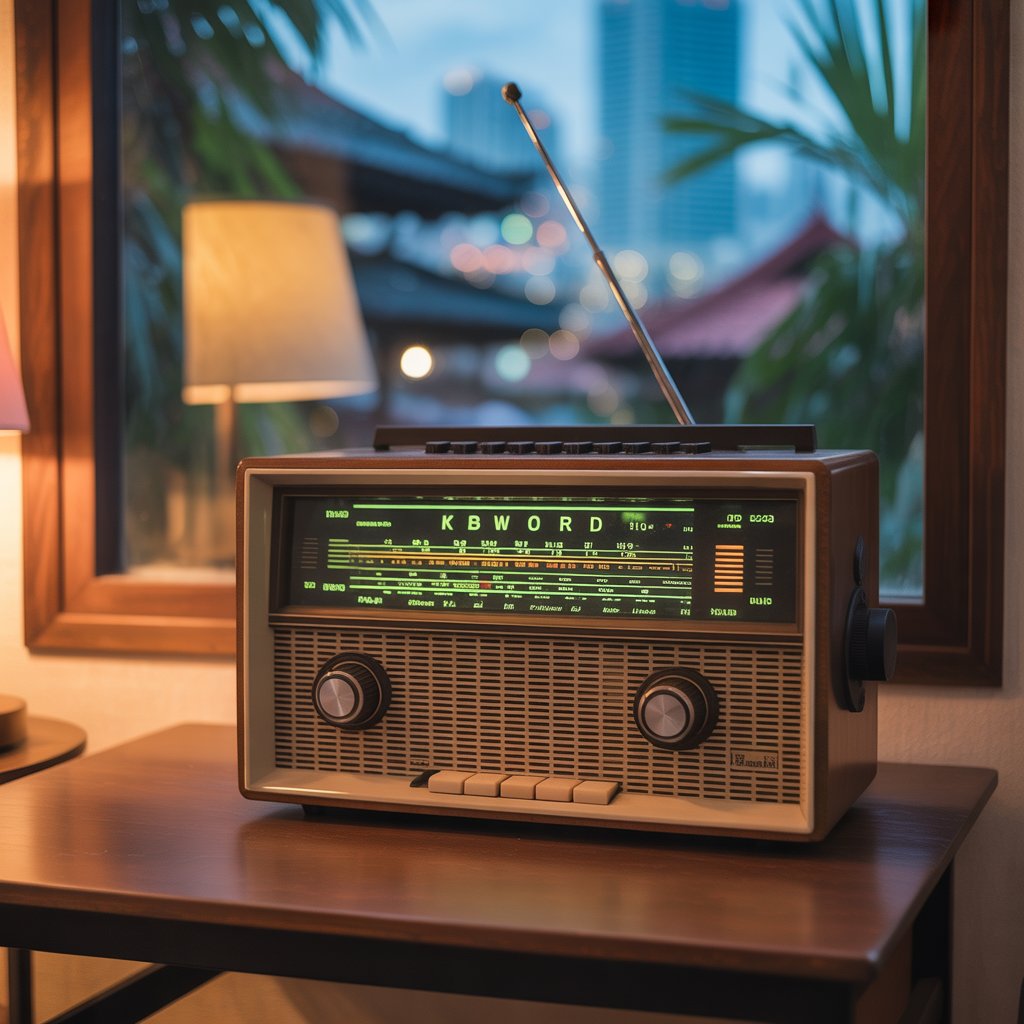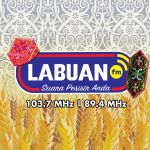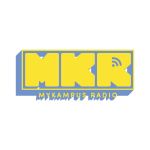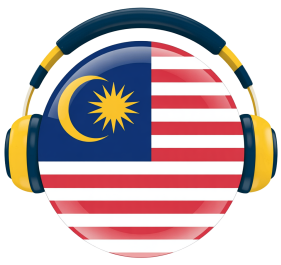Radio remains a powerful medium for connecting people across borders, offering a window into different cultures and languages. In Malaysia, where radio enjoys a 97.2% reach in Peninsular Malaysia, listeners are accustomed to a diverse array of local stations, from Hitz FM to RTM’s Radio Klasik. But what about international stations, particularly from Japan, a country known for its rich media landscape? Can Japanese radio stations be heard in Malaysia? This blog post explores the feasibility of receiving Japanese radio signals in Malaysia, covering traditional broadcasting methods, online streaming options, and the challenges involved.
Quick Answer
Japanese radio stations are generally not receivable in Malaysia via traditional AM/FM broadcasts due to the limited range of FM signals and the challenges of AM signal propagation across long distances. However, a rare instance of NHK Radio 1 AM 594 kHz was received in Langkawi, Malaysia, under exceptional conditions. For consistent access, listeners can stream Japanese stations like J-WAVE or NHK World Japan online using platforms such as TuneIn, myTuner Radio, or Radio Garden.
Understanding Radio Signal Propagation
AM and FM Limitations
Radio signals operate on two primary bands: AM (Amplitude Modulation) and FM (Frequency Modulation). FM signals, used by most modern stations, have a limited range of about 50–100 km due to their line-of-sight nature, making it impossible for Japan’s FM stations (operating on 76.0–95.0 MHz) to reach Malaysia, which is over 5,000 km away. AM signals, on the other hand, can travel farther, especially at night when atmospheric conditions enhance propagation through skywave reflection. However, even high-power AM transmitters struggle to deliver consistent signals over such vast distances.
Exceptional Case: NHK Radio 1 in Langkawi
In 2021, a radio enthusiast in Langkawi, Kedah, successfully received NHK Radio 1 on AM 594 kHz using a Panasonic RF-P50 receiver. This rare occurrence, documented by Philip Yong, was likely due to favorable nighttime atmospheric conditions and Langkawi’s coastal location, which minimizes interference. NHK Radio 1, part of Japan’s public broadcaster NHK, operates on medium wave (MW), which can occasionally reach distant locations under optimal conditions. However, such reception is unreliable and not replicable in most parts of Malaysia, especially urban areas like Kuala Lumpur.
Japanese Radio Stations Overview
Major Japanese Stations
Japan has approximately 880 AM and 1,100 FM radio stations, regulated by the Ministry of Internal Affairs and Communications. The Japan Broadcasting Corporation (NHK) operates three domestic channels (NHK Radio 1, NHK Radio 2, and NHK FM) and an international service, NHK World Japan, available on shortwave. Other notable stations include:
- J-WAVE (81.3 FM, Tokyo): A popular station for J-pop and international music.
- Tokyo FM (80.0 FM): Known for contemporary hits and talk shows.
- InterFM (89.7 FM, Tokyo): An English-language station with a mix of music and news.
- Radio Nikkei: A shortwave station focusing on financial news.
These stations primarily broadcast in Japanese, with InterFM and NHK World Japan offering some English content. None are receivable in Malaysia via traditional radio due to distance and signal limitations.
Shortwave Broadcasting
Shortwave radio, used by NHK World Japan (on frequencies like 11,815 kHz, 11,825 kHz, and 17,810 kHz), is designed for long-distance transmission. In Malaysia, shortwave enthusiasts have reported receiving NHK World Japan using specialized receivers like the TECSUN PL-380. However, shortwave requires dedicated equipment and is less common among casual listeners due to the rise of online streaming.
Accessing Japanese Radio in Malaysia
Online Streaming Platforms
The most reliable way to listen to Japanese radio in Malaysia is through online streaming. Several platforms offer access to Japanese stations:
- TuneIn: Lists stations like J-WAVE, Tokyo FM, and NHK World Japan. Simply visit the TuneIn website or app, search for “Japanese radio,” and select a station.
- myTuner Radio: Provides a curated list of Japanese stations, including J-pop and news-focused channels, accessible via its app or website (mytuner-radio.com).
- Radio Garden: A unique platform allowing users to explore global radio stations on an interactive globe. Japanese stations like Reds Wave (78.3 FM) and FM Odawara (78.7 FM) are available.
- Simulradio.jp: Streams local Japanese FM stations online, ideal for listeners seeking authentic content.
To listen, use a smartphone, computer, or smart speaker like Google Home with commands like “Hey Google, play J-WAVE on TuneIn.” These platforms are free, though some offer premium features for ad-free listening.
Mobile Apps and Smart Devices
Apps like Radio FM Malaysia and Online Radio Box also include Japanese stations. For example, Online Radio Box (onlineradiobox.com) allows users to filter by country and genre, offering access to J-pop stations. Pairing these apps with Bluetooth-enabled devices or casting to a Google Home speaker enhances the listening experience. Ensure a stable internet connection for uninterrupted streaming.
Challenges of Receiving Japanese Radio
Technical Barriers
The primary barrier to receiving Japanese AM/FM signals in Malaysia is distance. Japan’s FM band (76.0–95.0 MHz) overlaps partially with Malaysia’s (87.5–108.0 MHz), but FM’s short range makes direct reception impossible. AM signals, while capable of long-distance travel, are susceptible to interference and atmospheric variability. The Langkawi case was an outlier, requiring a sensitive receiver and ideal conditions.
Equipment Needs
Traditional reception of Japanese AM or shortwave signals requires specialized equipment, such as a high-quality radio receiver with a strong antenna. Most Malaysian households lack such devices, as modern radios focus on FM bands. Shortwave listening, while viable, is a niche hobby requiring knowledge of frequency schedules and propagation conditions.
Language Barrier
Most Japanese stations broadcast in Japanese, which may limit their appeal to non-Japanese-speaking listeners in Malaysia. However, stations like InterFM and NHK World Japan offer English content, and J-pop stations attract anime and music enthusiasts regardless of language.
Japanese Music on Malaysian Radio
Local Stations Playing Japanese Content
While direct reception of Japanese stations is challenging, some Malaysian stations occasionally play Japanese music, particularly J-pop and anime songs. For example:
- KK12FM (Sabah): Known to play anime songs like those from Slam Dunk and Naruto at night, as reported on Reddit.
- MY FM (88.1–107.5 FM): A Chinese-language station that sometimes includes Japanese songs, though not necessarily anime-specific.
- Unnamed Station (89.5 FM): A Reddit user reported hearing anime songs in the evening, possibly a local or regional station.
- 103.3 FM: A listener recalled hearing a Japanese song in 2011, suggesting occasional J-pop airplay on Malaysian stations.
These instances are rare and not dedicated to Japanese content, but they cater to Malaysia’s anime fanbase.
Cultural Context
Malaysia’s multicultural society, with a significant Chinese population, fosters interest in Japanese culture, particularly among anime and J-pop fans. Stations like MY FM may include Japanese songs to appeal to younger listeners, but no Malaysian station exclusively plays Japanese music.
Future Prospects
Advancements in Radio Technology
Collaborations like the Malaysia-Japan Workshop on Radio Technology (MJWRT) aim to advance radio communication systems, potentially improving international signal reach. However, AM/FM broadcasting remains limited by physics, making online streaming the dominant method for global access.
Growing Digital Access
With Malaysia’s radio industry embracing digital platforms and 5G, online streaming of Japanese stations is becoming easier. Platforms like myTuner Radio and Radio Garden are likely to expand their offerings, making Japanese radio more accessible to Malaysian listeners.
Conclusion
While Japanese AM/FM radio stations are generally not receivable in Malaysia due to signal range limitations, rare exceptions like NHK Radio 1’s reception in Langkawi highlight the potential under specific conditions. For most listeners, online platforms like TuneIn, myTuner Radio, and Radio Garden offer a practical solution, providing access to stations like J-WAVE and NHK World Japan with minimal setup. Malaysian stations occasionally play Japanese music, catering to local fans, but streaming remains the best way to enjoy authentic Japanese radio. Whether you’re a J-pop enthusiast or studying Japanese, these digital tools ensure you can tune in from anywhere in Malaysia.







